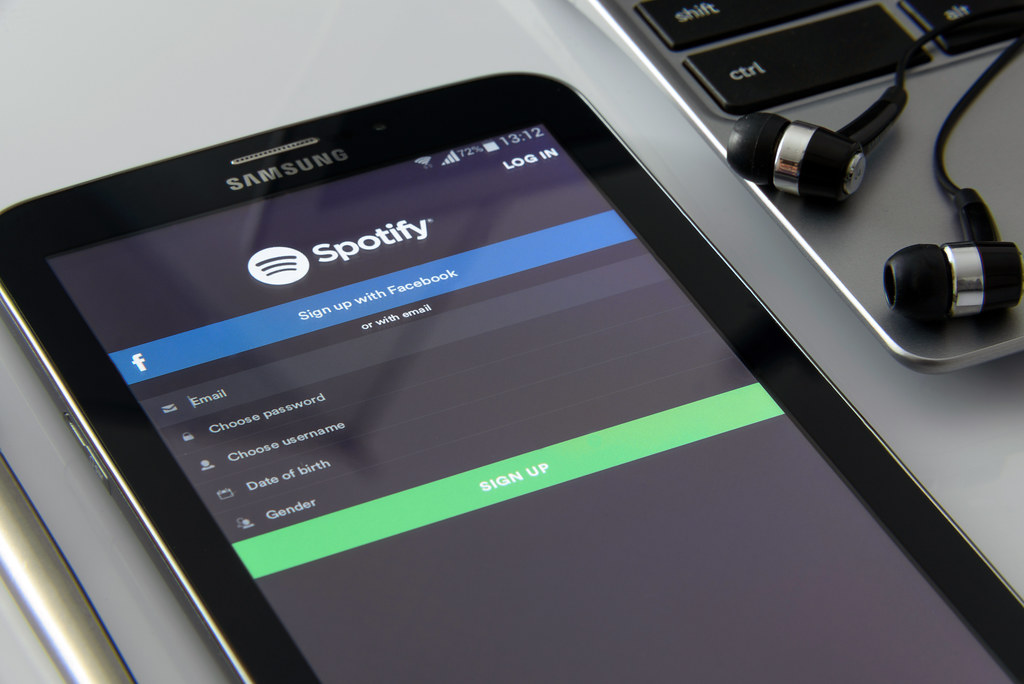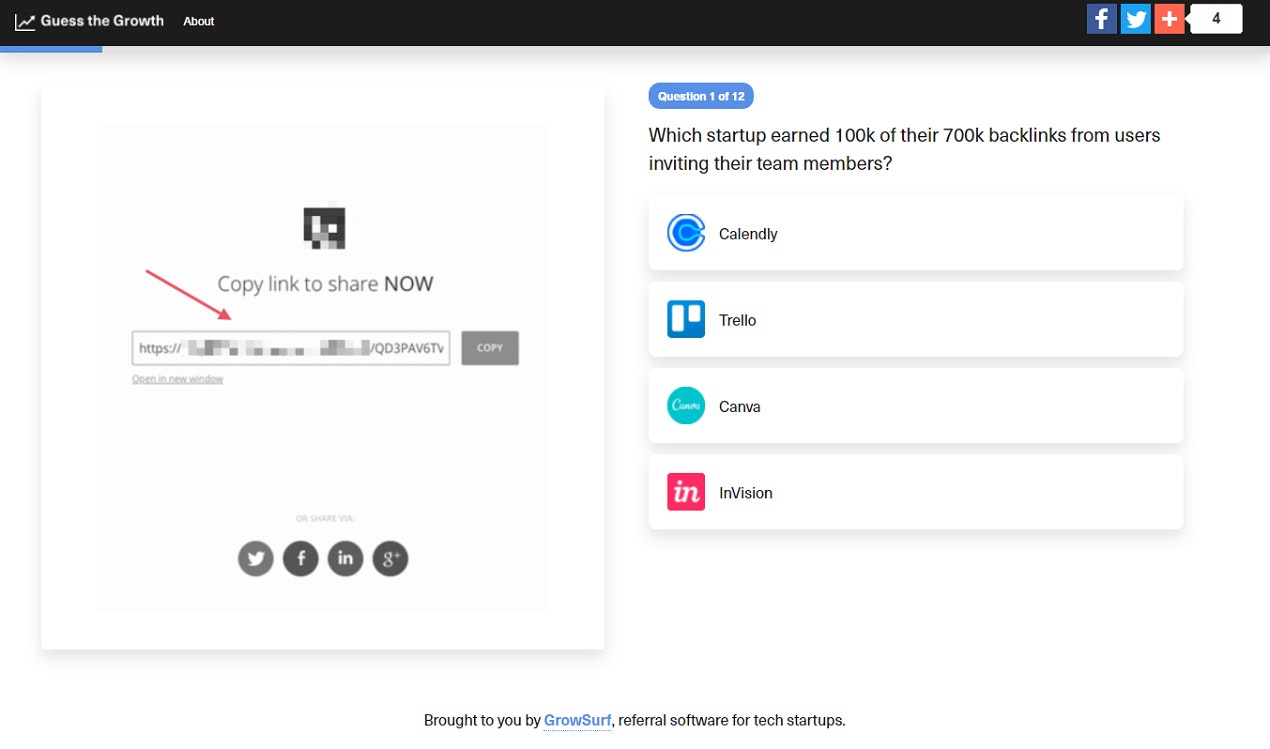Put your growth on autopilot
GrowSurf is modern referral program software that helps product and marketing teams launch an in-product customer referral program in days, not weeks. Start your free trial today.
The first of the 6 Principles of Persuasion, coined by Dr Robert Cialdini, the Reciprocity Principle, otherwise known as the Norm of Reciprocity boils down to that feeling of indebtedness that you get when someone does something for you. Psychologically interesting? Definitely. But when applied to a marketing campaign, the dividends can be reaped.
You’ve scratched my back, now I can scratch yours.
The Norm of Reciprocity is based entirely on human nature. It is only natural for humans to feel like they owe someone something if they’ve been given something. Take for example going out for a beer with friends. If someone buys you a drink, the most natural thing to say is “Thanks, I’ll get the next one!” (Unless you’re that guy…) or if someone comes to help you move house, you definitely feel like you owe them then.
The principle works in marketing through the gentle massage of that inherent guilt. Marketers use that feeling to make customers or potential clients feel indebted to the company somehow.
The most well known research into the Norm of Reciprocity goes back to a festive 1974, when around Christmas time, Phillip Kunz, a sociologist at Brigham Young University, sought to test the principle through a simple experiment. He decided to mail out Christmas cards to a seemingly random selection of people in nearby towns. He sent out 600 cards, each of them including a handwritten message alongside a photo of Kunz and his family.
This experiment is frequently cited as a classic example of the reciprocity principle in action. Despite being complete strangers, many recipients felt compelled to respond simply because Kunz had done them a small favor by sending a holiday card.

He didn’t appear to have a hypothesis and, instead, wanted to simply see what happened if he took this blind shot. Initially not a lot happened, but after just short of a week the replies began to drop into the mailbox. By the time he concluded the experiment, Kunz had received over 200 replies. Some of them including handwritten replies going on for pages and pages.
To explain what happened in Kunz’ experiment, we turn to Dr Robert Cialdini and his 6 (now 7) Principles of Persuasion. The Reciprocity Principle is the leading principle and one which is instilled from a very early age. "We are obligated to give back to others, the form of behavior that they have first given to us," he says. "Essentially thou shall not take without giving in return." Imagine going for a hike, and a passerby greets you as they walk by. You feel obliged, inherently, to reply. This is the Reciprocity Principle in action.
The principle makes sense in principle… but when applied to business there are certain ways to really make the most of it, increase your marketing effectiveness and, therefore, drive more conversions your way.
Be sure to be the one to offer something first, the last thing you want is to feel indebted to a customer, that's completely backwards. In fact, the best option would be to offer something to prospective customers without expecting them to do anything at all in return. That means giving without asking for their email, not hassling with sales calls after an action has been taken. Instead, have faith in the reciprocity and expect them to reciprocate.
As Robert Cialdini notes, "The implication is that if you go first with a gift, it's more effective than making someone a deal." By giving freely upfront, you establish trust and goodwill that makes people more inclined to reciprocate down the line.
By offering something without any expectation, the customer doesn’t feel obligated to do anything afterward, but the natural inclination to interact or work with you will increase. In practice, this could be a completely free tool on your website, or an eBook download.
Everyone likes to feel that their custom or their presence is valued. They also want to feel that they're not just another cog in your system or a number in the books, they're looking for a personalized service that feels unique to them.
Personalizing the user experience is a key way to make people feel valued and appreciated. This could involve using their name in communications, tailoring product recommendations based on their preferences and behavior, or celebrating milestones like a customer's anniversary with your brand.
There are, thankfully, easy ways to achieve this within business. It can be as simple as ensuring that your regular newsletters or mailshots properly make use of shortcode whereby their personal details are pulled through.
A seemingly useless bit of personalisation from a large supermarket chain in the UK, Sainsbury’s, allowed customers to compete against each other to be the number one purchaser of a certain product. This was linked to each customer through their loyalty card. It wasn’t pushed as a marketing campaign. You were just simply told that in your local supermarket you were the number one purchaser of Gin across all customers. That might not feel good for certain customers, but was a nice piece of personalization. In fact, a local postman even made the news when he was crowned the number 1 buyer of bacon sandwiches…

Source: Ely Standard
It's easy to help the customers who are with you in person, or are actively interacting with you but it should be a priority to assist customers who aren't directly with you. They might visit your website to read your blog, investigate glossaries or read up some frequently asked questions. You're still indirectly helping them, getting their eyes on your brand and building up a relationship with them.
Providing helpful, in-depth content is a great way to give value to potential customers before ever asking for anything in return. This could include detailed guides and tutorials, research reports, tools and calculators, or multimedia like videos and podcasts. The key is creating genuinely useful resources that establish your expertise.
This is where genuinely giving something of use and value comes into its own. If you're ever going to stick in a customer's mind and, therefore, be memorable, you're going to have to stand out from the crowd. No-one remembers a brand because they offered everyone a 10% off discount code but they will remember people who ran a free event, offered sample products for free or reached out to them personally.
According to research by the Wharton School, memorable experiences are defined by four key traits: being novel, creating surprise, allowing the customer to have a high degree of involvement, and being inherently associated with the brand. Giving away free samples, hosting unique events, or providing personalized outreach checks all of those boxes.
The easy route is to forget about the customer once the "final" invoice has been paid. Instead, the first sale should be the start of a journey together rather than the ending. Loyalty programs are ideal for keeping customers returning to you, alongside incentivized referral programs. You could always stick them on an email list and send out regular newsletters but that's neither memorable nor personal, and if you're completely honest, doesn't always deliver much value to the reader.
True relationship marketing goes beyond just newsletters and loyalty programs. It involves proactively nurturing the relationship through personalized touchpoints, exclusive access, and creating a sense of community. This could include things like hosting customer-only events, giving early product previews, or facilitating discussion forums where customers can connect with each other and your brand. Relationship marketing is a surefire way to increasing LTV and creating brand ambassadors.
Happy customers, generally, want to show their appreciation so facilitate this. It could be as simple as allowing them to easily leave you a review (feel free to prompt this) or ask them to follow you on social media. There are lots of creative ways to do this, you could even get some good ol fashioned bumper stickers.
Making it easy for satisfied customers to become vocal advocates is key. Provide clear calls-to-action and incentives for activities like leaving reviews, sharing referral codes, creating user-generated content, or joining your brand community. User advocacy can be a powerful driver of new business through social proof.
The Principle of Reciprocity is a blanket term for the overall principle, but there are, actually, 3 different types of reciprocity; Material Reciprocity, Financial Reciprocity and Emotional Reciprocity.
When you read material, think material goods, actual things. This is when you're loaned something by a neighbor or a friend. It's the classic of borrowing a cup of sugar from next door or a lawnmower then feeling obligated to loan them back something in return as and when they need it.
In a business context, material reciprocity could involve giving away free product samples or trial subscriptions. The idea is that by letting customers experience your offering at no cost, they feel a psychological desire to reciprocate that generosity when it comes time to make a purchase decision.
Almost exactly the same as material reciprocity but instead of physical items, we're talking about money. If someone lends you twenty dollars then, in the future, you'll feel like you have to loan it back to them should they need it.
Financial reciprocity is commonly leveraged through free trials, discounts, or cash incentives. For example, a SaaS company might offer a 30-day free trial or $100 credit to new customers. The idea is that after experiencing that upfront financial benefit, customers will feel compelled to reciprocate by becoming a paid subscriber.
A slightly different approach, we're moving away from physical and financial reciprocity. This form of emotional marketing is when we make people feel good about themselves through appreciative words and remarks. It might not be a conscious decision, but they will then feel emotionally reciprocal towards you in the future.
Emotional reciprocity could involve celebrating customer milestones, providing words of encouragement, or simply making people feel valued and appreciated. Research shows that emotional motivators like feeling cared for and respected are key drivers of brand loyalty.
There aren’t that many people who don’t use Spotify in some way, shape or form at this point. But there are 2 core ways you can access it. You can listen completely free of charge using their standard option but you have to listen to ads too which interrupts the listening enjoyment or you can pay for Spotify Premium and you can listen ad-free. Within Spotify’s marketing strategy, the reciprocity comes into play when people sign up for the 30 day, no obligation, free trial of Premium. By the end of the trial period, people have got so used to a great service that they can’t really justify cancelling their subscription. It certainly helps that the product is about the same cost as a fast food restaurant meal a month.

Source: Flickr, Mic JohnsonLP
The behemoth of online shopping is no stranger to the principle of reciprocity. Again, they’ve done down the free trial route, where once in, it’s difficult to go back. Prime users, during the free trial and beyond, gain quicker delivery for “free” alongside myriad other benefits such as music service and a streaming service. The fact that you basically earn back the cost if you use the service more than a few times a year makes this a no brainer. Take the global pandemic into account, Amazon reached over 200 million prime subscribers in 2020. The numbers are astonishing, “Amazon Prime membership grew to 147 million members in the U.S. as of March 2021, up 24.6%% from 118 million in March 2020.” Source: Digital Commerce

HubSpot has leveraged reciprocity through a combination of free tools and offering great levels of value without expectation of return. Their growth has been facilitated by a massive surge in users simply knowing about what they offer through easy to use, easy to find, completely free tools such as their email signature generator, keyword tool and endless courses.
People use these tools, get to know HubSpot and the features that it can offer, then choose whether they want to move forward with a purchase. The real desire comes from simply using the tools, they are incredibly easy to use and effective when used appropriately. The desire to see what else there could be from a paid subscription when the free tools are so good drives a hefty amount of conversions.
Source: Wikimedia Commons
This was an internal project for us here at GrowSurf. We launched a quizto the public which was a simple game based on famous startups’ tactics for growth. Educational and fun! The only nod to this being a GrowSurf product was a small bar at the bottom using a Powered By link. We launched this on ProductHunt and it led to multiple new signups through a similar tactic as HubSpot used above.

CopyBlogger leans heavily into content marketing, makes sense given what they do (the clue is in the name…) There is just loads of free, useful and valuable content on their site from eBooks to seminars, webinars to articles. All of which is completely free to access. This all actually comes after their initial free training and the option to use their professional copywriters. It’s a smart tactic, they tell you exactly how to do it yourself, and when you decide that you’re not going to, they’re right there and waiting for you.
This one of Cialdini's Principles is the one to focus on, if you choose to focus on any of them at all, simply because it's all about looking after your customer. By giving value, giving them a personalized experience and offering them something without expecting anything in return you're providing them with a quality experience, and they won't forget that quickly.
However, it's important to note that reciprocity alone is not enough to build a sustainable business. While giving value upfront can help attract prospects and get them engaged, you still need to deliver an excellent core product or service that provides real utility. The reciprocity principle should be viewed as a starting point for building trust and relationships, not the entire customer journey.
It's important to note that while the principles of persuasion can be powerful marketing tools, they should always be used ethically and in the best interests of the customer. The goal should be to build genuine relationships and provide real value, not to manipulate or deceive.

GrowSurf is modern referral program software that helps product and marketing teams launch an in-product customer referral program in days, not weeks. Start your free trial today.
Customer acquisition is essential in growing a business, but it’s even more critical to make them stick around. Relationship marketing can help you with that.
Emotional marketing at its finest is marketing that makes you feel. But how can we use emotions to better market to an audience?
Spotify has become a household name across the world. Here’s a look into the marketing strategies that grew a start up from Stockholm into a $72B company.